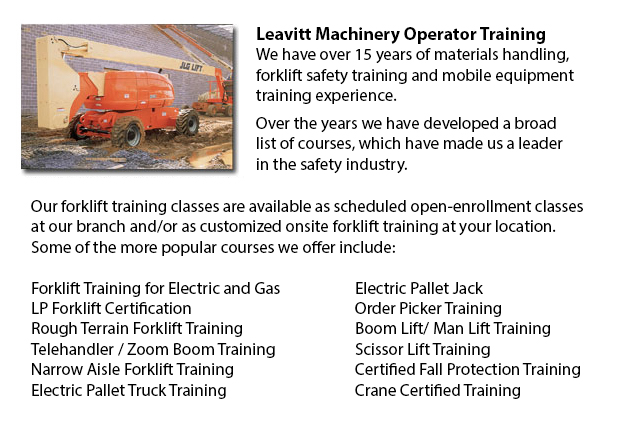
Aerial Platform Training Markham - Aerial forklifts can be utilized to accomplish a lot of distinctive duties done in hard to reach aerial places. Many of the duties associated with this type of lift include performing regular repair on structures with elevated ceilings, repairing telephone and power lines, raising heavy shelving units, and pruning tree branches. A ladder could also be utilized for some of the aforementioned jobs, although aerial lifts provide more safety and strength when correctly used.
There are several versions of aerial lifts accessible on the market depending on what the task needed involves. Painters sometimes use scissor aerial lifts for example, which are classified as mobile scaffolding, effective in painting trim and reaching the 2nd story and higher on buildings. The scissor aerial jacks use criss-cross braces to stretch out and extend upwards. There is a table attached to the top of the braces that rises simultaneously as the criss-cross braces elevate.
Cherry pickers and bucket trucks are a different type of the aerial lift. Typically, they possess a bucket at the end of an elongated arm and as the arm unfolds, the attached bucket lift rises. Platform lifts utilize a pronged arm that rises upwards as the lever is moved. Boom lift trucks have a hydraulic arm which extends outward and raises the platform. All of these aerial lift trucks call for special training to operate.
Training courses presented through Occupational Safety & Health Association, known also as OSHA, cover safety methods, machine operation, upkeep and inspection and machine cargo capacities. Successful completion of these training programs earns a special certified license. Only properly qualified people who have OSHA operating licenses should operate aerial lift trucks. The Occupational Safety & Health Organization has established guidelines to uphold safety and prevent injury while using aerial lifts. Common sense rules such as not utilizing this machine to give rides and making sure all tires on aerial lift trucks are braced in order to prevent machine tipping are mentioned within the rules.
Sadly, data expose that greater than 20 aerial lift operators die each year while operating and almost ten percent of those are commercial painters. The bulk of these incidents were triggered by inadequate tie bracing, for that reason several of these might have been prevented. Operators should make sure that all wheels are locked and braces as a critical security precaution to prevent the instrument from toppling over.
Additional suggestions involve marking the encircling area of the device in an obvious way to safeguard passers-by and to guarantee they do not come too close to the operating machine. It is imperative to ensure that there are also 10 feet of clearance between any electrical lines and the aerial lift. Operators of this equipment are also highly recommended to always have on the appropriate security harness when up in the air.
-
Crane / Overhead Crane / Self-Erect Crane / Truck Mounted Crane / Hydraulic Cranes Training in Markham
Bridge cranes or overhead cranes are a kind of industrial material handling crane making use of a hook and line apparatus that runs on a horizontal beam running along two widely separated rails. Many overhead cranes could be seen inside a long factor... More -
Manlift Ticket Markham
Manlift Ticket Markham - The Manlifts and Elevated Platforms program provides training on the regulations, rules and correct application of safe operating procedures and work practices involved in everyday activities for individuals who work with thi... More -
Aerial Lift Train the Trainer Markham
Aerial Lift Train the Trainer Markham - The Aerial Lifts Train the Trainer Certification Program will teach trainers how to effectively train operators in safe industrial mobile equipment operation. Trainers are given in-depth instruction on aerial l... More -
Loader Operator Training Markham
Loader Operator Training Markham - Loader Operator Training - Within North America, lift truck operator training is required to be able to prevent workplace injuries and accidents. Certain forklift training would be provided to be able to offer forkl... More -
Aerial Boom Lift Ticket Markham
Aerial Boom Lift Ticket Markham - Aerial lift trucks can be used to accomplish many unique duties done in hard to reach aerial spaces. A few of the duties associated with this style of jack include performing daily repair on buildings with high ceili... More -
Boom Lift Operator Training Markham
Boom Lift Operator Training Markham - The cherry picker work platform is a type of work platform, that will usually have a bucket or platform at the hydraulic lifting system's end. The machine is likewise called a boom lift, man lift, hydraladder or... More -
Boom Lift License Markham
Boom Lift License Markham - Just fully qualified individuals must operate an aerial boom lift. Qualification can be obtained through a combination of classroom sessions and practical training with the particular kind of aerial lift that will be used... More -
Telehandler Training Courses Markham
Telehandler Training Courses Markham - The employer has the responsibility to make certain that their workers are trained to work proficiently with telehandler machines. The staff have to be assessed for their skill to utilize the equipment. If defic... More

Forklift Training Markham
TOLL FREE: 1-888-254-6157
Markham, Ontario
forklifttrainingmarkham.com
Email Us
About Us


